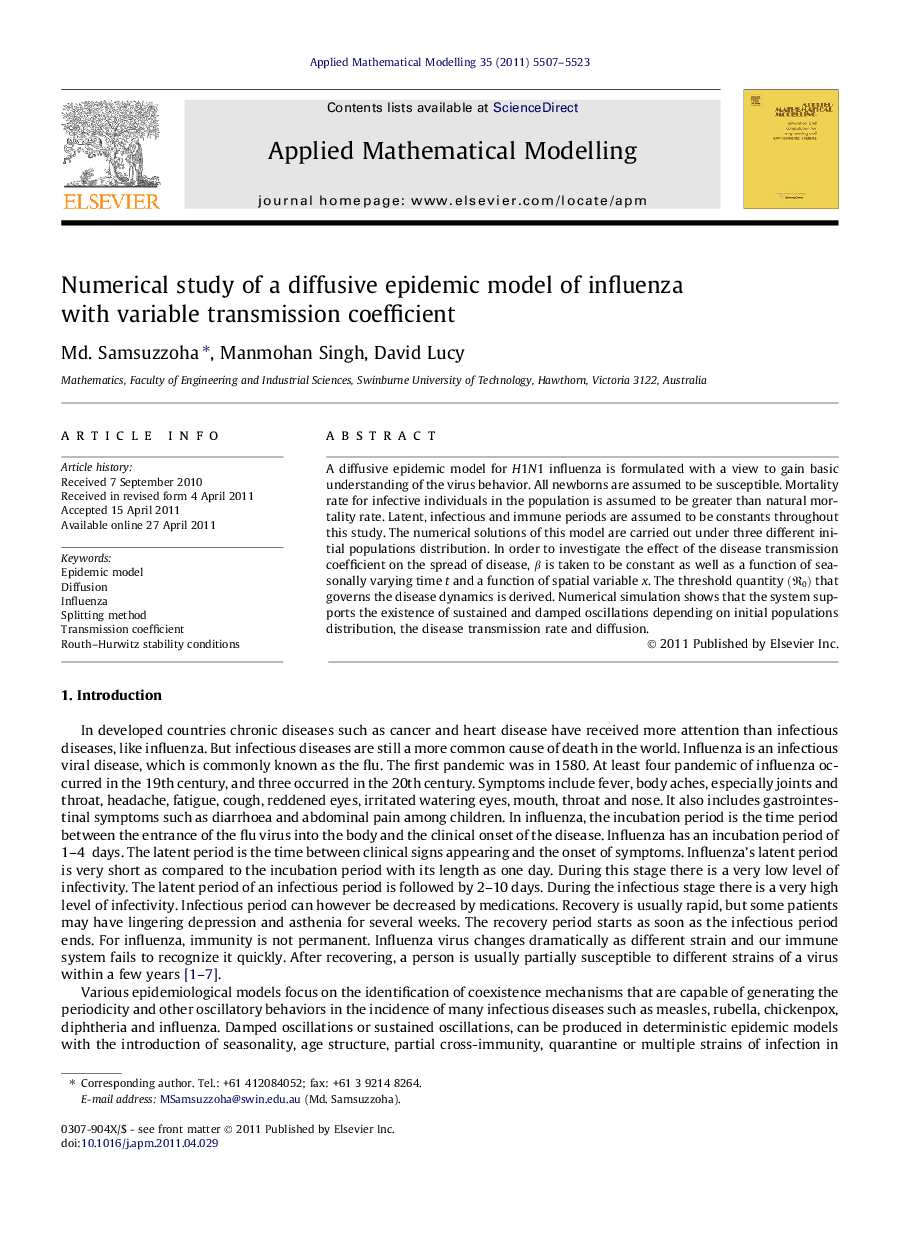| کد مقاله | کد نشریه | سال انتشار | مقاله انگلیسی | نسخه تمام متن |
|---|---|---|---|---|
| 1705675 | 1012438 | 2011 | 17 صفحه PDF | دانلود رایگان |

A diffusive epidemic model for H1N1 influenza is formulated with a view to gain basic understanding of the virus behavior. All newborns are assumed to be susceptible. Mortality rate for infective individuals in the population is assumed to be greater than natural mortality rate. Latent, infectious and immune periods are assumed to be constants throughout this study. The numerical solutions of this model are carried out under three different initial populations distribution. In order to investigate the effect of the disease transmission coefficient on the spread of disease, β is taken to be constant as well as a function of seasonally varying time t and a function of spatial variable x . The threshold quantity (R0)(R0) that governs the disease dynamics is derived. Numerical simulation shows that the system supports the existence of sustained and damped oscillations depending on initial populations distribution, the disease transmission rate and diffusion.
Journal: Applied Mathematical Modelling - Volume 35, Issue 12, December 2011, Pages 5507–5523